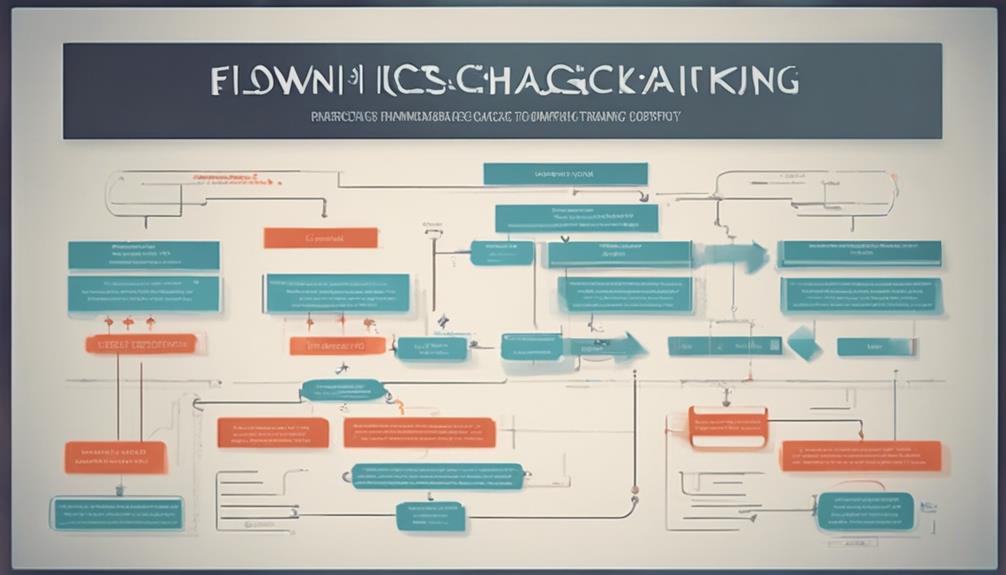To master chargeback management as an ISO, focus on building a skilled team adept at analysis and communication. Implement robust prevention strategies, including fraud prevention tools and clear customer communication. Analyze data to understand trends and utilize technology like Chargeflow for efficient management. Minimize financial losses by identifying fraudulent patterns and staying compliant with regulations. Enhance your expertise by fostering adaptability, providing regular training, and maintaining open communication. Strengthening these essential skills is key to maneuvering through the complex payment landscape successfully. Discover further insights into chargeback management to elevate your ISO capabilities.
Key Takeaways
- Strong analytical abilities aid in understanding chargeback trends.
- Foster a culture of teamwork and effective communication within the team.
- Utilize fraud prevention tools to minimize chargeback losses.
- Implement secure payment processing for enhanced trust and security.
- Regular training sessions on industry regulations are crucial for team members.
Building a Skilled Chargeback Team

To build a skilled chargeback team, focus on hiring employees with strong analytical abilities and fostering a culture of teamwork and effective communication. When handling chargeback disputes, having team members who excel in analyzing data and identifying patterns can greatly enhance your resolution outcomes.
Encouraging open communication and collaboration within the team ensures that information flows smoothly and decisions are made collectively. Regular training sessions on industry regulations and best practices are crucial to keep your team updated and equipped to navigate the complexities of chargeback management.
Moreover, promoting adaptability among team members allows them to adjust to changing circumstances and apply new strategies effectively. Continuous improvement should be at the core of your team's ethos, driving them to seek better ways to handle chargeback resolutions.
Implementing Robust Prevention Strategies

Implement robust prevention strategies to safeguard your business against chargeback losses and maintain a secure payment environment. Effective prevention strategies can greatly reduce chargeback losses to less than 0.5% of total revenue, helping eCommerce merchants keep chargeback rates below 1%. Utilizing fraud prevention tools is vital in implementing robust prevention strategies. Clear communication, secure payment processing, and accurate product descriptions are key components that contribute to preventing chargebacks. Regularly reviewing and updating return policies can also play a significant role in effective chargeback prevention. By integrating these prevention strategies into your business operations, you can create a more secure and reliable payment environment for your customers.
| Prevention Strategies | Description | Benefit |
|---|---|---|
| Fraud Prevention Tools | Utilize advanced tools to detect and prevent fraudulent activities in real-time. | Minimize chargeback losses and risks. |
| Clear Communication | Maintain transparent communication with customers regarding transactions and policies. | Reduce misunderstandings and disputes. |
| Secure Payment Processing | Implement secure payment gateways and encryption protocols to protect payment data. | Enhance trust and security for customers. |
| Accurate Product Descriptions | Provide detailed and accurate information about products to set clear expectations. | Decrease instances of buyer confusion. |
Analyzing Data for Insights

When delving into the world of chargeback management, analyzing data for insights plays a crucial role in understanding trends and proactively addressing common causes of chargebacks. Data analysis involves monitoring key performance indicators (KPIs) related to chargeback rates and reasons.
Regular data review is vital for identifying trends and common causes, enabling you to take proactive measures to prevent chargebacks. Utilizing chargeback management software can aid in accurate data analysis, providing actionable reports that inform effective prevention strategies.
Assigning specific responsibilities for prevention, managing chargeback disputes, and conducting in-depth data analysis ensures a thorough approach to handling chargebacks. Cross-training your team members enhances their flexibility and expertise in analyzing data, enabling them to gain valuable insights that can help in reducing chargeback rates and improving overall efficiency in chargeback management.
Leveraging Technology for Efficiency

Leverage technology tools like Chargeflow to enhance chargeback management efficiency for ISOs. By utilizing Chargeflow's Dispute Automation and ChargeResponse® features, ISOs can automate dispute management processes, saving time and resources.
The platform also offers actionable analytics that enable ISOs to track and analyze chargeback trends effectively. Additionally, Chargeflow guarantees high security standards, providing ISOs with a reliable and secure environment for managing chargebacks.
Implementing Chargeflow can streamline chargeback management processes, leading to improved operational efficiency for ISOs. With technology playing an essential role in today's business landscape, integrating solutions like Chargeflow can greatly benefit ISOs in handling chargebacks efficiently.
Stay ahead of the curve by leveraging technology to automate processes and gain valuable insights into chargeback trends, ultimately enhancing operational efficiency and optimizing the chargeback management workflow for ISOs.
Minimizing Financial Losses and Maintaining Compliance

To minimize financial losses and maintain compliance, ISOs must strategically implement effective chargeback management strategies. Understanding transaction data and customer information is essential in identifying patterns of fraudulent activity that could lead to chargebacks. Clear communication with customers, banks, and processors is necessary to resolving disputes promptly and preventing unnecessary financial penalties and fees. Additionally, compliance with specific rules and regulations governing chargebacks is critical for ISOs to operate successfully within the industry standards.
| Key Points | Importance |
|---|---|
| Transaction Data Analysis | Identify fraudulent activity patterns |
| Clear Communication | Resolve disputes and prevent financial penalties |
| Compliance with Regulations | Operate successfully within industry standards |
| Financial Loss Prevention | Implement effective chargeback management strategies |
| Avoiding Penalties and Fees | Maintain compliance with card network rules |
Frequently Asked Questions
How to Efficiently Handle Chargeback?
To efficiently handle chargebacks, start by responding promptly to disputes, particularly those involving potential fraud. Utilize chargeback management software to streamline processes and enhance outcomes.
Understanding the root causes of chargebacks is key to effective resolution. Regularly monitor chargeback activity to detect patterns and vulnerabilities early on.
Taking these steps will help you save time and resources while protecting merchants from financial losses.
What Does a Chargeback Specialist Do?
A chargeback specialist plays a vital role in resolving disputed transactions.
They meticulously review transaction details, gather evidence, and craft effective responses to challenge chargebacks.
By communicating with banks, processors, and customers promptly, they aim to minimize financial losses and maintain merchant accounts in good standing.
Their expertise helps prevent fraud, protect revenue, and ensure compliance with card network regulations, making them an essential asset in the payment processing industry.
What Is the Difference Between a Chargeback and a Refund?
When it comes to chargebacks and refunds, the key difference lies in who initiates the process. Customers request refunds directly from merchants, while chargebacks are initiated by cardholders via their issuing banks.
Chargebacks often indicate potential fraud, with significant fees for merchants ranging from $30 to $100 per incident. Understanding these distinctions is essential for effective chargeback management and fraud prevention strategies.
What Is the Reason Code 75 for Visa Chargeback?
Reason Code 75 for Visa chargebacks is 'Transaction Not Recognized' by the cardholder. This code indicates that the cardholder doesn't acknowledge the transaction. It's often linked to potential fraud or unauthorized transactions.
To dispute Reason Code 75 chargebacks effectively, merchants must provide compelling evidence. Understanding Reason Code 75 is crucial for managing Visa chargebacks and preventing revenue losses.
Conclusion
In summary, mastering chargeback management is essential for ISOs to thrive in the competitive payment processing industry. ISOs can differentiate themselves from the competition by efficiently handling chargebacks and minimizing their impact on merchants. By reducing chargeback risks, ISOs can build trust with their clients and attract new businesses looking for reliable payment processing solutions. Ultimately, mastering chargeback management not only ensures the success of ISOs in the industry but also strengthens their relationships with merchants.
By building a skilled team, implementing prevention strategies, analyzing data, leveraging technology, and minimizing financial losses, ISOs can streamline operations and guarantee compliance.
Remember, honing these essential skills won't only boost efficiency but also catapult your business to new heights.
So, keep refining your chargeback management techniques and watch your success soar to unprecedented levels.










